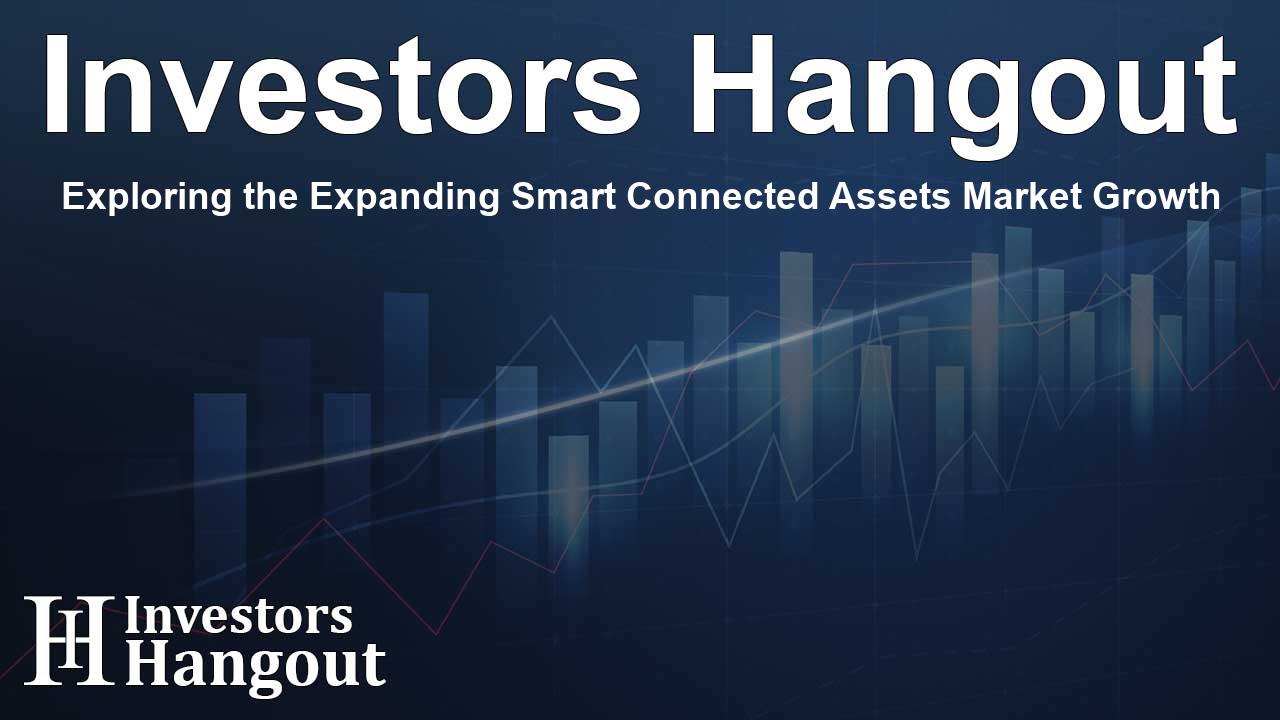Exploring the Expanding Smart Connected Assets Market Growth

The Dynamic Growth of the Smart Connected Assets and Operations Market
The Smart Connected Assets and Operations Market, valued at USD 219.00 billion in 2024, is projected to surge to USD 441.87 billion by 2032. This significant growth represents a compound annual growth rate (CAGR) of 9.27% from 2025 to 2032. This transformation is largely fueled by the rapid integration of Internet of Things (IoT) technologies and a growing demand for enhanced operational efficiency.
Shifting Towards Predictive Operational Management
As industries adopt IoT-enabled solutions, the shift from reactive to predictive asset management is becoming increasingly pronounced. Businesses are experiencing a technological revolution where connected devices, real-time analytics, and cloud computing converge to optimize performance. This transition is driven by a desire to reduce downtime, cut operational costs, and enhance visibility over critical assets and operations.
Market Insights: The U.S. Landscape
The U.S. Smart Connected Assets and Operations Market is expected to grow from USD 56.85 billion in 2024 to USD 112.81 billion by 2032, achieving an impressive CAGR of 8.94%. This growth is supported by substantial government initiatives promoting smart infrastructure, including the DIGIT Act, which encourages the development of smart community technologies.
Impact on Key Industries
Various sectors including manufacturing, energy, logistics, and agriculture are embracing digital connectivity. As organizations continue to upgrade legacy systems, the integration of smart connected assets is becoming vital to the evolution of global industrial frameworks.
Prominent Market Players
The Smart Connected Assets and Operations Market features several key players such as IBM Corporation, General Electric (GE), Siemens AG, Schneider Electric, Rockwell Automation, Honeywell International, ABB Ltd., Cisco Systems, PTC Inc., and SAP SE. These companies are driving innovation and competition within the market, working towards developing advanced solutions for diverse industries.
Market Segmentation and Trends
The factory automation segment dominated the market in 2024, contributing approximately 31% of the overall revenue. This segment's growth is attributed to the expanded deployment of industrial IoT and robotics, along with systems designed for real-time monitoring, which enhance operational effectiveness. While factory automation represents a major aspect of the Smart Connected Assets and Operations Market, segments such as smart agriculture are expected to experience remarkable growth in the near future.
Emerging Trends in Smart Agriculture
Smart agriculture is slated to be the fastest-growing segment within this market. It is forecasted to expand at a CAGR of 11.53% from 2025 to 2032. The rising global food demand, labor shortages, and sustainability initiatives are crucial factors fueling this growth. Advanced technologies like drone operations, sensor systems, and yield analytics are transforming agriculture practices, allowing farmers to make informed decisions that optimize resource usage.
North America vs. Asia Pacific
In 2024, North America accounted for 37% of the global market revenue; driven by significant investment in digital infrastructure and early leads in Industry 4.0 adoption. Conversely, Asia Pacific is predicted to be the fastest-growing region, with a CAGR of 10.94% due to rapid urbanization, smart infrastructure projects, and advancements in automation technologies, particularly in countries such as China.
Recent Developments Shaping the Market
- June 2024: Honeywell launched its Connected Power solution, enabling real-time energy tracking and efficiency improvements in buildings.
- January 2024: Honeywell entered a partnership with NXP Semiconductors to integrate AI capabilities into building management systems to enhance energy optimization.
Conclusion: Preparing for the Future
The Smart Connected Assets and Operations Market is set to undergo a significant transformation over the next decade. The convergence of IoT, advanced analytics, and connected devices creates enormous opportunities for industries to enhance operational efficiencies and adapt to dynamic market conditions.
Frequently Asked Questions
What is the expected market size for Smart Connected Assets by 2032?
The market is projected to reach USD 441.87 billion by 2032.
What factors are driving the growth of this market?
The increasing adoption of IoT technologies and the demand for predictive operational efficiency are key drivers.
Which industries are significantly benefiting from smart connected assets?
Industries such as manufacturing, agriculture, energy, and logistics are experiencing substantial benefits from smart connected technologies.
Who are the key players in the Smart Connected Assets market?
Major players include IBM, GE, Siemens, and Honeywell, among others.
Which region is anticipated to experience the highest growth?
Asia Pacific is expected to see the highest growth rate, driven by urbanization and technological advancements.
About The Author
Contact Riley Hayes privately here. Or send an email with ATTN: Riley Hayes as the subject to contact@investorshangout.com.
About Investors Hangout
Investors Hangout is a leading online stock forum for financial discussion and learning, offering a wide range of free tools and resources. It draws in traders of all levels, who exchange market knowledge, investigate trading tactics, and keep an eye on industry developments in real time. Featuring financial articles, stock message boards, quotes, charts, company profiles, and live news updates. Through cooperative learning and a wealth of informational resources, it helps users from novices creating their first portfolios to experts honing their techniques. Join Investors Hangout today: https://investorshangout.com/
The content of this article is based on factual, publicly available information and does not represent legal, financial, or investment advice. Investors Hangout does not offer financial advice, and the author is not a licensed financial advisor. Consult a qualified advisor before making any financial or investment decisions based on this article. This article should not be considered advice to purchase, sell, or hold any securities or other investments. If any of the material provided here is inaccurate, please contact us for corrections.
